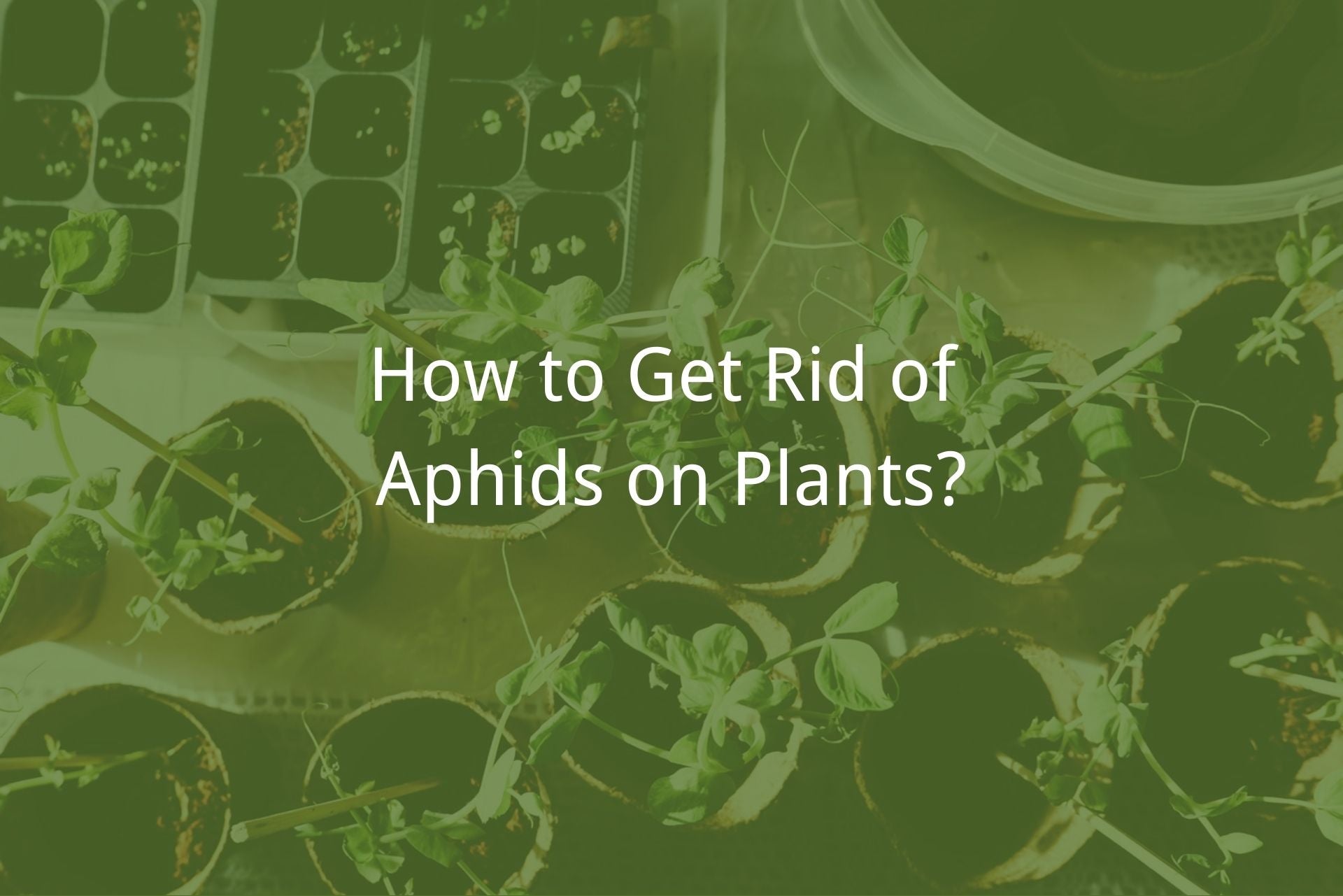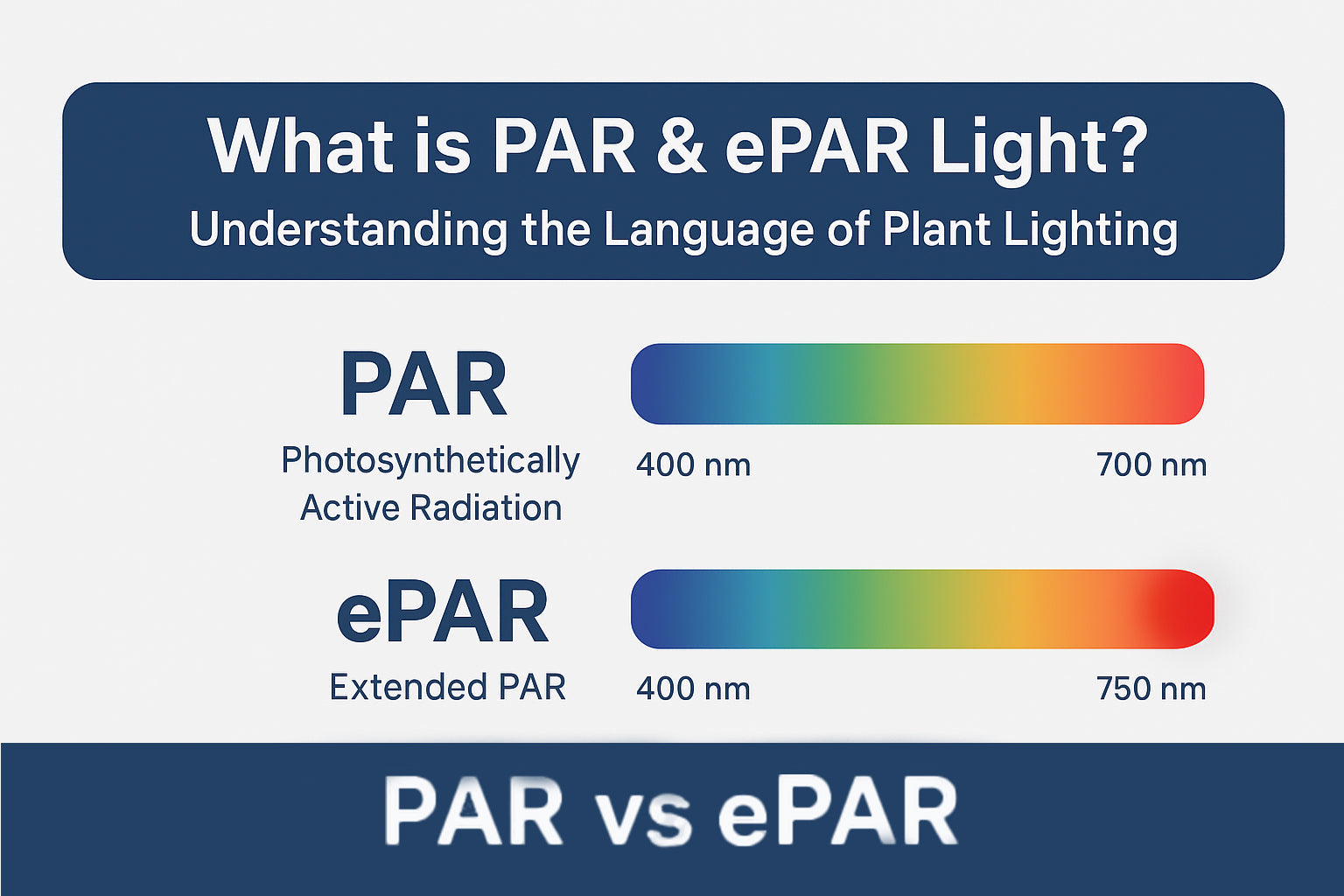
How to Get Rid of Aphids on Plants? 2024 Upadte
Aphids are the bane of plants in most gardens and are among the most notorious pests. They are very destructive, frustrating, overwhelming, and multiply rapidly. Therefore it is important for growers to get rid of aphids on plants.
Aphids have earned the nickname 'plant lice,' which can also be called greenflies or garden lice due to how fast they spread. Their presence in your garden will leave you with stunted, sticky plants which struggle to thrive.
So, it is vital to be fully informed on how to get rid of aphids if you wish to get the best from your garden.
- Part 1: A Quick Consideration
- Part 2: A Basic Knowledge of Aphids
- Part 3: How Do Aphids Feed?
- Part 4: Identifying An Aphid Damage
- Part 5: Prevention And Control of Aphid Infestation
- Part 6: Get Rid of Aphids Manually
A Quick Consideration
Aphids are no respecter of any plant type, as they invade indoor and outdoor plants equally – including edibles and ornaments.
Even if these bugs are usually seen in a negative light, it is best to see them as nature's way of indicating that there's an imbalance within your garden. This is because they grow only on plants undergoing certain levels of stress, e.g., heat, over-fertilizing, or overwatering.
If you quickly recognize aphids on plants, it is relatively easy to manage them before their colonies grow out of control. The question is, how large can these colonies grow?
All things being equal, a female aphid that hatches in spring can produce an estimated 600 billion offspring or more than 41 progenitors of other female aphids in only one season.
This is why control is essential, even if you only decide to get rid of aphids naturally before these colonies expand.
A Basic Knowledge of Aphids
An Aphid is a sap-sucking, soft-bodied, and tiny insect that is part of the superfamily, Apidoidea.
These insects range from around 1/16 – 1/4 in length, have bodies shaped like pears, are waxy, and vary in color, depending greatly on the nature of the species in question. More than 5000 of these aphid species have been discovered today.

Image Source: icipe.org
Some of the variants of these aphids include black aphids and green aphids. However, the most dangerous of these aphids are the green aphids or green flies. They are notorious because of their color, as they easily blend in with plants and can go unnoticed, growing out of control.
There are other aphids like the white aphids that are wild-haired and woolly (resembling mealybugs) and the red, yellow, brown, and gray aphids. Some of these aphids possess wings, making it easy for garden owners to mistake them for other pests. This especially happens in a season when their colonies have become too massive.
The overcrowding that occurs during this season makes the females begin developing hormones due to hormone triggers. This enables them to establish new colonies on other food sources by flying in their direction. They form these colonies quickly and viviparously – by giving birth.
Although these insects have small bodies and are almost insignificant individually; however, their strength is in their numbers, and with their effective reproduction, they can cover your garden in no time. This is why it is crucial to get rid of aphids as soon as you discover them to avoid adverse outcomes.
How Do Aphids Feed?
Aphids have the habit of feeding in groups- large groups especially; they may occasionally be seen feeding in small numbers or singly. Generally, these insects feed on a variety of plants, but some species of aphids prefer to feed on specific plants, hence they are named after what they eat.
For instance, cabbage aphids, green peach aphids, wooly apple aphids, melon aphids, potato aphids, etc.
Identifying An Aphid Damage
Still on feeding habits, adults and nymphs prefer to feed on stems, buds, plant juices, fruit, roots, and flowers - this depends on the particular species.
The majority of aphids have a special preference for succulent newly-grown plants. Certain aphids like the green peach type consume a wide plant variety, while others like the rosy apple aphid feed on only a few plants.
There are changes to look out for when trying to identify aphid damage in your plants:
On leaves and stems
Look out for yellowing, stunting, and curling of the leaves. Also, look at the underside of the leaves as these aphids love to hide in these regions. If you observe a sticky substance on the stems or leaves, it implies these aphids have started to sip the sap.
This ‘honeydew’ is formed by aphids on houseplants and can attract other insects like ants which use them as food. The quantity of honeydew becomes larger when aphids feed on trees; it, therefore, drops on cars, driveways, and outdoor furniture.
Branches and leaves can also appear black - this is a fungal growth known as sooty mold. Also, if you don’t get rid of aphids, they could deform and distort the fruits and flowers because of how they feed. Other species of aphids may cause galls to be formed on leaves or roots.
Finally, aphids may also cause the transmission of viruses between garden plants, attracting insects that could prey on them, e.g., ladybugs.
On roots
Aphid damage on roots is similar to that seen on leaves and stems. Ultimately, when aphids damage plant roots, they also causes yellowing, curling of leaves, and failure to thrive.
Infected plants become prone to mildew, root rot, and many other diseases, and many above-ground treatments will prove ineffective. Seeing these root pests are equally common to outdoor and indoor plants, you need to deploy measures to get rid of aphids humanely.
Prevention And Control of Aphid Infestation
In the care of plants, biological and artificial methods work synergistically to get the required results on some occasions. At certain other times, a single method may be adopted owing to the nature of the planting process.
For example, the decision to grow a plant indoors requires using artificial lighting systems like LED Grow Lights while neglecting the use of natural sunshine in many cases. If done well, all methods ultimately lead to getting the desired results.

Full-spectrum grow light is also the case with the prevention of aphid infestation. Here, you can choose to deploy artificial methods or get rid of aphids naturally. The best outcomes emerge from deploying both options.
Get Rid of Aphids Manually
Spraying water
By spraying plants using a garden hose, you can effectively get rid of aphids early in the planting season when an infestation has not fully taken place. This method is, however not the best for delicate and small plants but works best for much stronger plants that can withstand the high pressure of water.

Manual Removal
You can use your hands to remove these aphids by first wearing gloves and knocking them off one after the other from the buds, stems, leaves, or any parts you discover. Cutting off affected branches and disposing of them in a bucket could prove effective.
Using Organic and Natural Sprays
Water and Soap
By mixing pure liquid soap with some water, you can create an effective homemade aphid spray. Never use detergents or other products which contain moisturizers or degreasers.
Then, apply the mixture with a spray bottle onto the aphids and the parts affected by the plant. Doing this ensures adequate soaking of the undersides of leaves where the eggs of aphids are likely found.
The soap mixture functions by dissolving the outer protective layer of aphids, which eventually kills them. Birds or other beneficial insects like ladybugs, lacewings, and pollinating bees are less likely to be affected due to their tough bodies.
Neem Oil
The organic components of neem oil also help to get rid of aphids naturally. They act as aphid repellents and kick out insects like beetles, cabbage worms, leaf miners, ants, mealybugs, and other caterpillar types.
The drawback is that they can also repel advantageous insects, so it is necessary to take caution as you use neem oil in their presence. In the case of fungus growth, neem oil also serves the purpose of effective control.
Essential oils
You can also make your homemade spray mixture using essential oils. Here, use about 4/5 drops of peppermint, thyme, rosemary, and cloves, and then mix them with water in a spray bottle. Then spray affected plant parts to remove adult aphids and remove the remaining eggs and larvae.
Growing The Best Plants
Plants also help to attract natural predators of aphids or those which serve as repellents. Other plants help to divert aphids from your houseplants and eventually trap them. Make sure to keep your garden free of dead material and clean enough to prevent the presence of aphids in the winter.
- Use clover, fennel, yarrow, dill, and mint to attract beneficial insects.
- Use chives, garlic, allium, catnip, and onion as natural aphid repellents.
- Use aster, nasturtium, mustard, cosmos, zinnias, and dahlias to trap aphids.
Getting rid of aphids on roses
If you have rose bushes, it is crucial to keep an eye on them - to quickly identify aphid attacks and prevent aphids.

This is because aphids have a high affinity for rose plants and an infestation is most likely. They love to gather under leaves and stay below rosebuds. You can get rid of aphids on roses by using any of the methods above.
Getting aphids off tomato plants
Doing this is very simple, as you can plant tomato companions such as chives, marigolds, and lavender.
Using alcohol to control aphids
Ethanol works best to help get rid of aphids, but isopropyl alcohol is easier to find in local stores (although its disadvantage is that it lacks additives).
Alcohol found in stores comes in a 70% or 95% strength. You can turn alcohol into a viable insecticide by mixing equal parts of the 70% alcohol with water. If you are utilizing 95% alcohol, do it in a ratio of 1 part of alcohol to 1 and a half parts of water.
To make this even more effective, you can make a mixture of soapy emulsion with alcohol. For instance, combine one tablespoon of liquid soap with five cups of water and two cups of isopropyl alcohol.
However, don't spray these kinds of solutions over the entire surface of plants all at once. Wipe or spray only the infested areas of the plants repeatedly to eventually kill the aphids.
As a note of caution, don’t go all out spraying the entire plant with soap or alcohol mixtures – begin with testing the effect on plants first. So, apply the chemical solution to only a part of the plants in the morning and evening, then watch it for a couple of days to see the outcome.
It is necessary because some of these solutions may contain harmful ingredients, or your plants may not be able to cope with them. Also, do well to use only the purest forms of soaps or alcohol as additives that could be toxic.
Conclusion
It is not uncommon to find aphids on plants. However, it is vital to detect them early and apply necessary measures to get rid of aphids from plants.
You can use many methods, but the most advisable is the natural method. It guarantees less risk to plants, is cost-effective, and gives the best output.
Aphids and their larvae are easy to identify on roots, stems, and leaves; they build colonies at an alarming rate, so always treat any occurrence with a sense of urgency.
Ready to get rid of aphids naturally? Waste no time! Start today.
Related Posts
Learn About Nutrient Lockout: How to Fix it
Featured Products
Blog Posts
Contact Us with Any Idea!
- Choosing a selection results in a full page refresh.
!
































